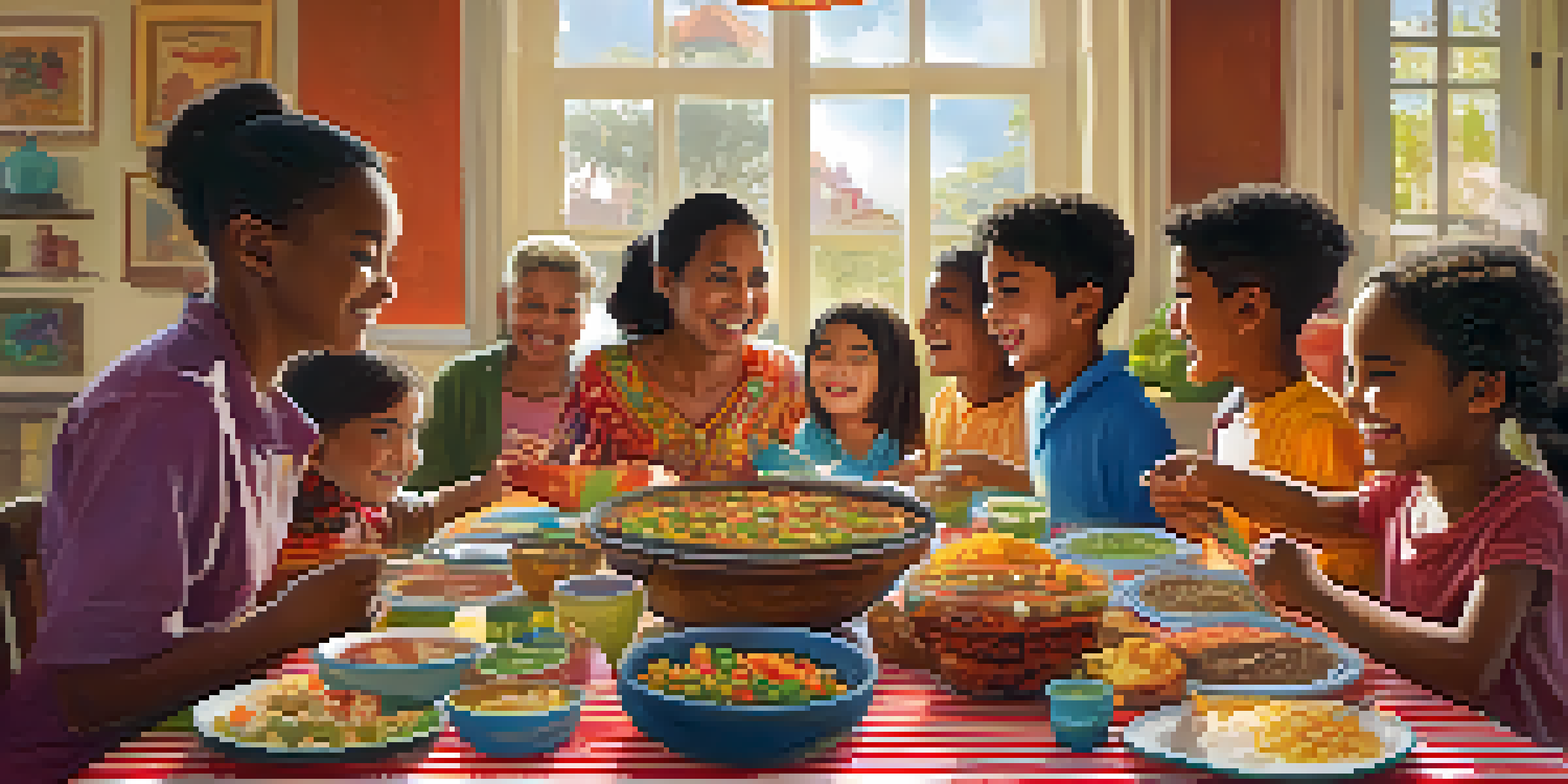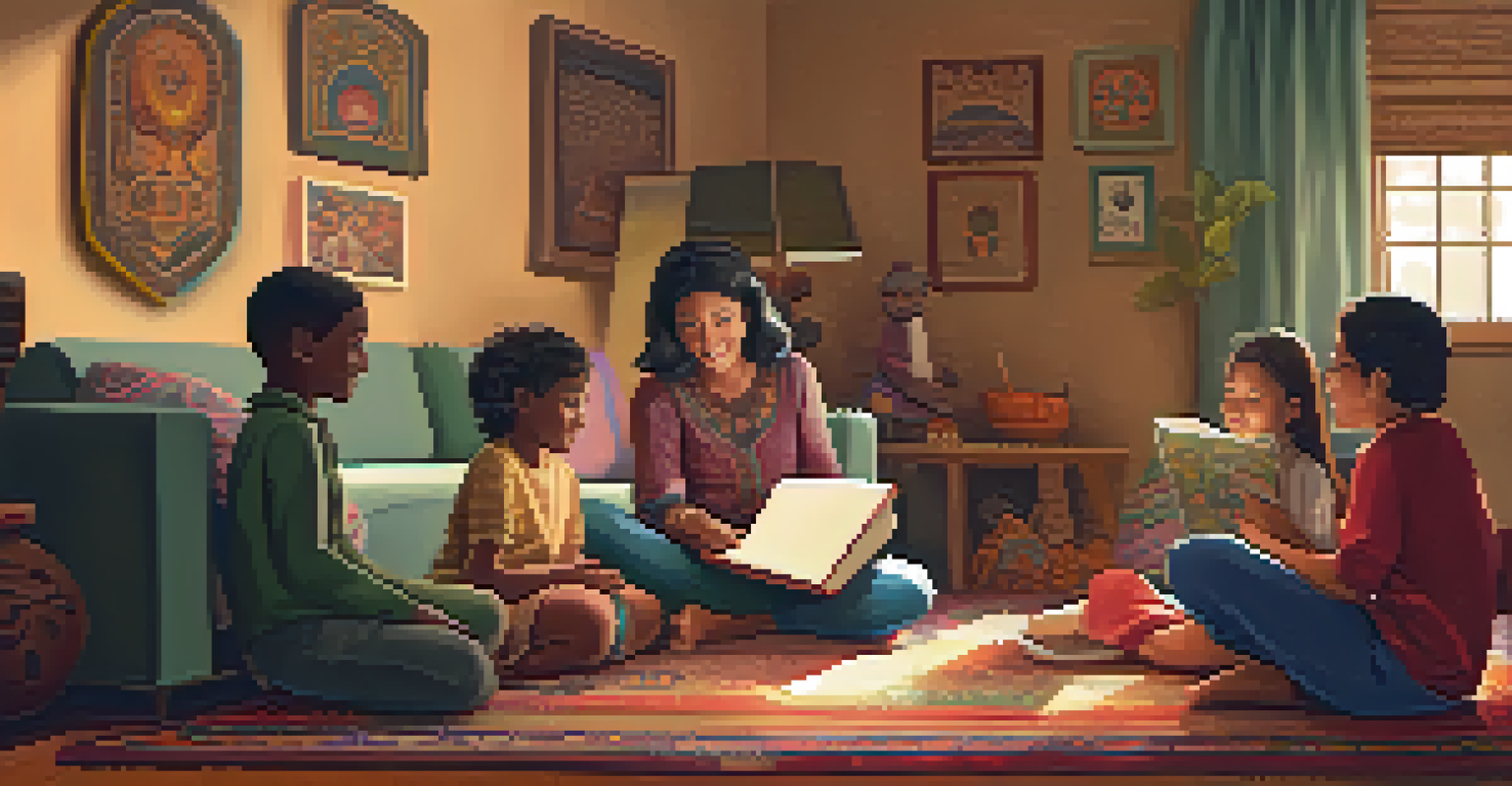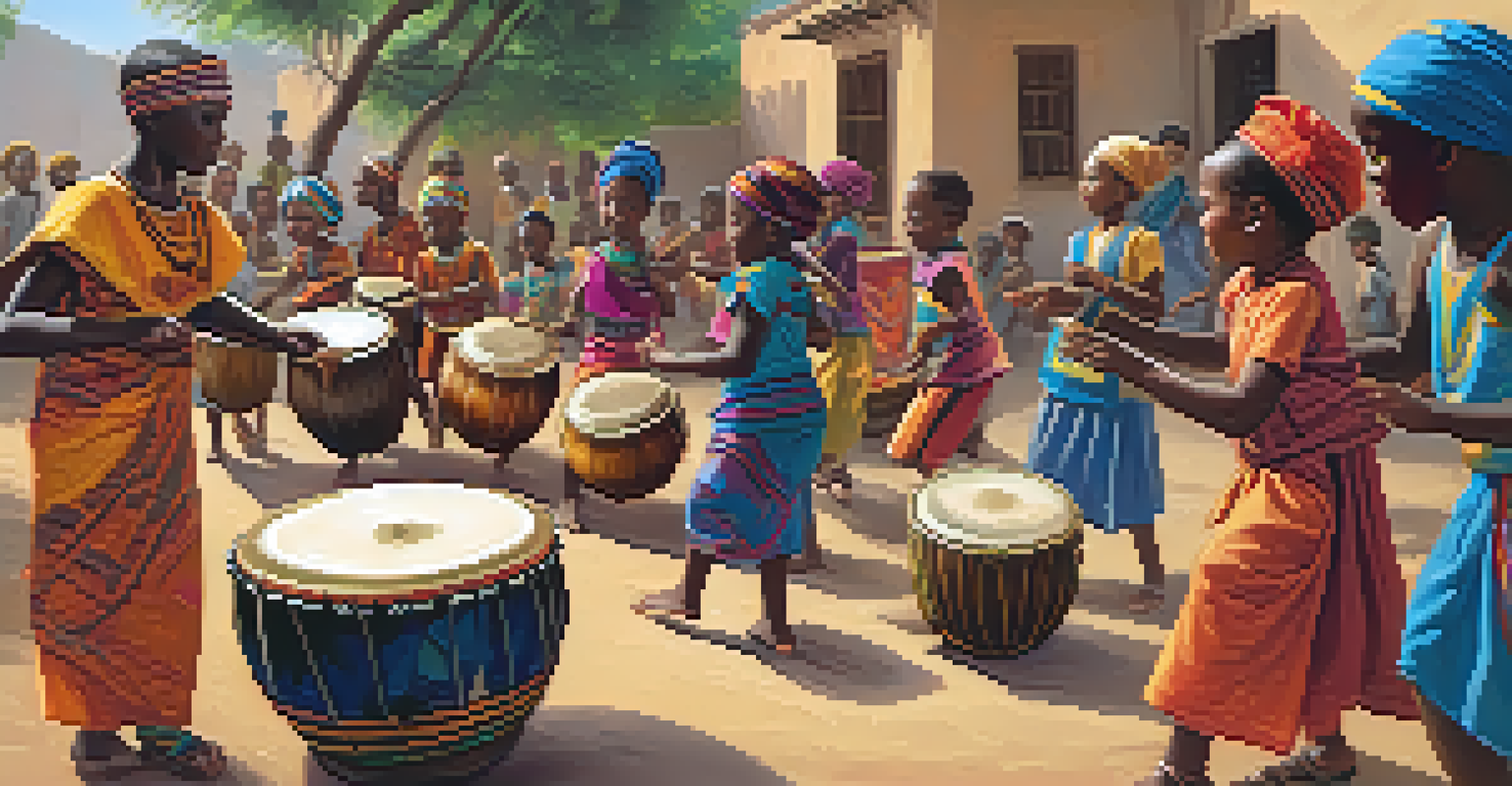Cultural Experiences: Introducing Kids to New Traditions

Why Introducing Kids to New Traditions Matters
Introducing children to new cultural traditions helps them develop a broader worldview. It nurtures curiosity and fosters empathy, allowing kids to appreciate differences and similarities among people. As they learn about various customs, they gain insights into how diverse communities celebrate life.
The world is a book, and those who do not travel read only one page.
Moreover, cultural experiences can enhance a child's sense of identity. By exploring their heritage alongside others, kids can better understand their own traditions and how they fit into the larger tapestry of society. This exploration promotes a sense of belonging and respect for others.
Finally, engaging with different cultures can spark creativity and critical thinking. Kids may find inspiration in new art forms, music, or storytelling techniques, leading to imaginative play and innovative ideas. This creative engagement can be invaluable in their educational journey and personal growth.
Engaging with Food: A Delicious Way to Learn
Food is one of the most accessible ways to introduce kids to new cultures. Cooking and tasting traditional dishes can be a fun family activity that encourages teamwork and experimentation. For example, preparing homemade sushi can teach children about Japanese culture while honing their cooking skills.

Visiting restaurants that offer authentic cuisine is another great option. Kids can learn about different dining customs and even try their hand at ordering in the local language. This not only broadens their palate but also gives them a real-world context for cultural exploration.
Broaden Worldviews Through Traditions
Introducing kids to new cultural traditions nurtures curiosity and empathy, helping them appreciate diverse communities.
You can also incorporate food experiences into celebrations. Hosting a multicultural potluck allows families to share dishes from their backgrounds, creating a feast that showcases diversity. This experience helps kids appreciate the significance of food in cultural traditions and fosters community connection.
Festivals and Celebrations: Experiencing Culture Firsthand
Participating in cultural festivals is an exciting way to immerse kids in new traditions. Events like Diwali, Lunar New Year, or Día de los Muertos offer vibrant displays of art, music, and dance that can captivate young minds. These experiences not only educate but also create lasting memories.
Food is our common ground, a universal experience.
Involving children in the preparation for these celebrations can enhance their understanding. They can help make decorations, learn traditional songs, or even create their own outfits. By taking part in the process, kids feel a sense of ownership and excitement about the events.
Additionally, festivals often include storytelling and performances that convey the history and values of a culture. As children witness these narratives unfold, they gain insights into the beliefs and practices of different communities, fostering a deeper appreciation for diversity.
Storytelling: A Bridge to Understanding Cultures
Storytelling is a powerful tool for introducing kids to new traditions. Folktales and myths from different cultures can teach valuable lessons while sparking imagination. Sharing stories from around the world can also highlight how universal themes, like kindness or bravery, resonate across cultures.
Reading books that feature diverse characters and settings can further enrich this experience. Look for stories that celebrate different holidays or customs, allowing children to see the world from various perspectives. This not only enhances literacy skills but also encourages empathy and understanding.
Food as a Cultural Gateway
Engaging kids in cooking and tasting traditional dishes makes cultural exploration fun and educational.
In addition, families can create their own stories inspired by cultural elements. Kids can invent characters, settings, and plots that reflect what they've learned about different traditions. This creative process reinforces their understanding while making learning fun and engaging.
Travel: Exploring Cultures Beyond the Classroom
Traveling to different countries or regions offers an unparalleled opportunity for cultural immersion. Visiting historical sites, museums, and local markets can bring traditions to life in ways that books or videos can't. Kids can observe firsthand how people live, work, and celebrate their cultures.
When planning a trip, consider incorporating activities that allow children to interact with locals. This could include participating in workshops, attending community events, or even volunteering. These experiences can lead to meaningful connections and enrich the travel experience.
Even local travel can be impactful. Exploring neighborhoods with diverse populations can expose children to different customs and languages. This awareness fosters curiosity and appreciation for the rich tapestry of cultures that exist, even in their own backyards.
Art and Music: Creative Expressions of Culture
Art and music are fantastic ways to expose kids to new cultural traditions. Engaging in art projects inspired by different cultures can help children express their understanding creatively. For instance, creating African-inspired masks can teach kids about the significance of art in that culture.
Music, too, plays a vital role in cultural expression. Introducing children to traditional songs or instruments can spark their interest in different musical styles. Kids might enjoy learning to play the drums in a West African rhythm workshop, providing a hands-on experience that enriches their understanding.
Travel for Cultural Immersion
Traveling offers kids firsthand experiences with different cultures, deepening their understanding beyond the classroom.
Moreover, attending performances such as dance shows or concerts can further enhance their appreciation for cultural diversity. Experiencing live art and music allows kids to feel the energy and passion of different traditions, making the learning experience memorable and enjoyable.
Encouraging Open Conversations About Culture
Creating a space for open conversations about culture is essential in helping kids understand diversity. Encourage them to ask questions about different traditions and share their thoughts. This dialogue fosters a sense of curiosity and critical thinking about cultural differences.
You can also use current events as a springboard for discussion. For example, when a cultural celebration is featured in the news, take the opportunity to explore its significance together. This approach helps kids connect what they learn to the real world, making it more relevant and engaging.

Lastly, modeling respectful behavior and attitudes towards different cultures is key. Children learn by example, so demonstrating curiosity, respect, and appreciation for diversity will encourage them to adopt these values. This foundation will serve them well as they navigate an increasingly interconnected world.